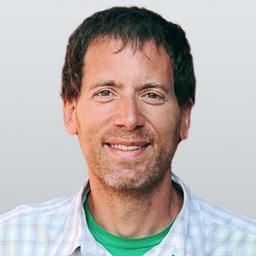When she was 5 years old, her left leg twisted inward, and she couldn’t move it back. Earlier she had contracted scarlet fever, and now she was diagnosed with polio, which had no cure and left most children either permanently disabled or dead.
For many years she wore a brace supporting her leg. Cheered on by her family, she exercised continuously, at home and at physical therapy at a nearby hospital, strengthening the paralyzed muscles. One Sunday, in the church that she and her family devoutly worshipped, she mustered the bravery to attempt to walk without it. The congregation witnessed a miracle as she moved through the aisle on her own accord.
At age 20, Wilma Rudolph arrived in Italy to represent the United States at the 1960 Olympics as a track and field competitor—the heart of a legacy as “America’s greatest female sports hero since Babe Didrikson Zaharias a generation earlier.”

A Long Shot of Considerable Odds
Born in Clarksville, Tennessee, on June 23, 1940, Wilma Glodean Rudolph arrived two months earlier than expected and significantly underweight. Only four and a half pounds, her earliest days were marked by sickness, including bouts of chicken pox, mumps and measles. Double pneumonia and scarlet fever nearly took the girl’s life at age 4. And then she was stricken with polio, also known as infantile paralysis. Doctors told her parents to expect and prepare for the worst: she would probably never be able to walk again.“Before I realized I was a living person, I was in (leg) braces,” she once told a crowd of college students.
Kids singled her out for ridicule, or they ostracized her and excluded her from their games and activities. But Rudolph continued to keep her body—and mind—in motion any manner that she could. Fitted with a leg brace and orthopedic shoe, the young girl would not be defeated by her shortcoming. She hopped on one foot in the house and street. She tossed a basketball into a makeshift hoop—a peach basket attached to a pole in the backyard. She helped her mother with the chores, cooking, cleaning, and taking care of the many other children. Rudolph’s family took her to a hospital in Nashville, where the doctors tended to the girl’s compromised leg with massage and exercise.
Dramatic Character on Display
At age 15, she excelled at basketball, earning All-State honors and even notched a state record of 49 points in a single contest. But in track, she exhibited a toughness and determination that seemed almost divine; her passion possessed with a unique ardor and intensity that perhaps only someone who had come so far, so quickly the way she had could demonstrate.“Serious running is like a war,” she said. “You sacrifice a lot of things if you are young and ambitious.”
Gold Medals; Inspiring Life of Service
In the summer of 1960, Rudolph represented the United States at the Olympic Games in Italy, the first time ever the Olympics would be broadcast internationally. Just after she arrived in Rome, Rudolph slipped and twisted her ankle. Despite the swelling and pain, she pushed on and plowed forward, similar to the way she had her entire life. The path once again relied on her own heart.Rudolph won the 100-meter dash and 200-meter dash, and as the fourth and final runner on her team, crossed the finish line half-a-second ahead of her opponent, to earn her team a medal in the 400-meter relay race. Rudolph tallied her third gold of the games anchoring the U.S. team of Martha Hudson, Lucinda Williams and Barbara Jones. In a dramatically scripted spin of events, a once unimaginably sickly child in north Tennessee was now one of the fastest and most decorated athletes in the world.

“I love what the Olympics stand for,” she once said. “They’ll always be a part of me.”
There was a parade and banquet held in Rudolph’s honor in her hometown, and there was no doubt a great swell of enjoyment among the Rudolph family, who had experienced all of the hurt, drive, and struggle that marked their loved one’s journey.
Rudolph retired from her career as a runner in 1962, earned a college degree in education, and became a second-grade teacher and a high school basketball and track coach. She started an eponymous nonprofit foundation to inspire and teach young athletes to believe that they could also succeed in spite of any challenges or obstacles that might come their way.
Rudolph’s accomplishments earned her many honors and awards, including the Babe Didrikson Zaharias Award, and she was inducted into the National Track and Field Hall of Fame in 1974. But there was a unique luminosity that she projected post-retirement that was just as dazzling and vital as the fire that guided her earlier ambitions. Community- and family-oriented, Rudolph kept a tight connection to home following her Olympiad days, and, whether training young athletes or restoring her parents’ home, or lending her name, time, and goodwill to youth sports programs, she appeared to do it with characteristic genuineness.

“My interest has always been at the grass-roots level because that’s how my career started,” Rudolph said in 1993. “I’d like to give kids that same opportunity because it doesn’t really exist anymore.”
Mother of four, Rudolph stayed heavily invested in the community and state where she was raised, working at a local bank, serving as a consultant to a tourism development board, and as vice president of Nashville’s Baptist Hospital.
“A handsome, regal woman, 6 feet tall, charming, graceful, and gracious,” Rudolph died at age 54 of a malignant brain tumor.
A life-sized bronze statue of Rudolph adorns the Wilma Rudolph Event Center in Clarksville, a facility that hosts a large cross-section of events and activities, and the nonprofit Wilma Rudolph Foundation continues to train young athletes and promote youth athletic programs.








